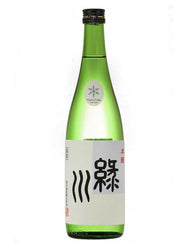At Meat N' Bone, we are in love with all things Japan. From manga to Wagyu A5 beef. There is just something about the fine craftsmanship that the Japanese can achieve that is worthy of admiration.
A few months ago, we started working on our latest venture, Miami's first casual steakhouse that focuses on selling proper meats. By chance we met Carrie; one of the few actual Sake Sommeliers in the US. She was kind enough to come to our restaurant to help us develop our Sake menu and gave us a lesson in Sake which we will now share in this post.
What Is Sake?
Sake is an alcoholic beverage made from polished rice. A lot of people will tell you it is "wine" made of rice, but it really isn't. Sake is its own kind of beverage and in fact, the process of brewing it is closer to that of beer. That said, sake is meant to be drunk like wine.
Sake has four main ingredients: Water, Rice, Koji (a type of mold) and Jozo (alcohol, optional). It is brewed using water and yeast and the rice.
Each ingredient can make a huge difference. The style of the sake will vary by something as simple as what region in Japan the water comes from. Carrie works with Sake from the prefecture of Niigata, which is renowned in Japan as one of the best areas for growing rice and for its heavy snowfall resulting in an abundance of soft clear pure water
Sake will be much stronger than your typical beer or wine, with alcohol levels that hover between 14% and 18%.
How Is Sake Brewed?
When you make wine, you are simply fermenting grapes where the sugar in the grapes converts to alcohol. Sake is made out of rice and unlike grapes, rice does not really ferment. So in order to make alcohol out of rice, "Koji" (enzymes) are added to turn the starch into alcohol and to ferment the alcohol. As a result, sake is brewed which is why we say it is more similar to beer.
The process goes like this:

Sake Grades
Sake is graded. The grade of any particular sake is determined by how much of the rice grain is polished away. The more polished the grain, the more refined and smooth the sake.
When it comes to sake, Premium often means it is more expensive. It does not necessarily mean it's better. The expense is due to the quality of the ingredients and by how much labor is into creating the sake.
The 4 Grades Of Sake
There are 4 grades of sake based on how much the rice is "milled".

- Futsu: Regular sake; the rice is not very refined. This is akin to what in America we would consider "table wine." Inexpensive, great for cooking and not very refined.
- Honjozo: The first tranche of premium sakes, the rice has been milled by 30% so that 70% of the rice grain remains and contains a small amount of Jozo (brewer’s alcohol) which is added for different flavor & aroma profiles. Honjozo sake is usually excellent to pair with a wide range of foods.
- Ginjo: Means sake that it has been milled by 40% so that 60% of it remains and contains a small amount of Jozo (brewer’s alcohol) which is added for different flavor & aroma profiles. It is more aromatic and lighter, making it easier to sip and a great compliment to sushi and fish.
- Daiginjo: The most refined sake. This sake takes a lot more time, effort and skill to hand craft. It has rice that has been milled by more than 50% and contains a small amount of Jozo (brewer’s alcohol) which is added for different flavor & aroma profiles. But that milling standard is often surpassed by brewers looking to push the rice milling envelope that results in sakes that can be milled down to 35%, or down to 23%, and even 7% remaining figures. They are excellent on their own and are often served for sipping, chilled. When sake maker’s send their brews to National Sake Appraisals and Competitions, they usually send their Daiginjo sake.
What Is Junmai?
Remember how we mentioned that Jozo (distilled brewer's alcohol) can be the 5th ingredient of sake? When distilled alcohol is NOT used in the production of sake, then the sake is considered a PURE rice sake and it is considered "Junmai".
Junmai-Ginjo is the same as a Ginjo sake but WITHOUT any Jozo added. And Junmai-Daiginjo is the same as Daiginjo WITHOUT any Jozo added.
Why add alcohol? Because it's fun and it can create a more complex and richer product. The idea is to add alcohol to draw more flavour and aroma compounds from the fermented mash.
Pairing And Buying Sake
Sake is gaining popularity in the US. We love to pair a sake with a good steak or fish. It is also a cool ingredient to use in the kitchen. At Meat N' Bone, we sell Sake in our boutiques and ship it inside of Florida.
We also invite you to join us at The Wagyu Bar where you can try many different sakes!
Checkout our lineup of Sake:
← Older Post Newer Post →
RSS



















